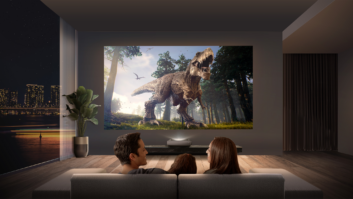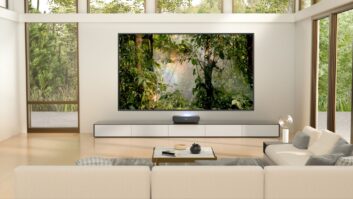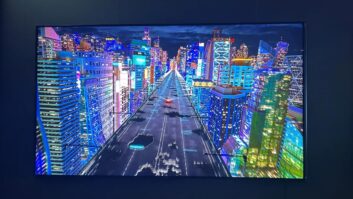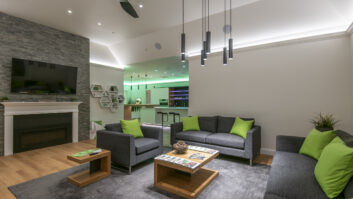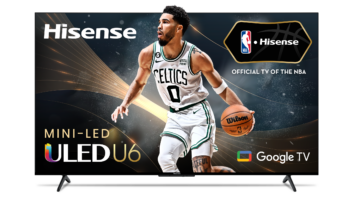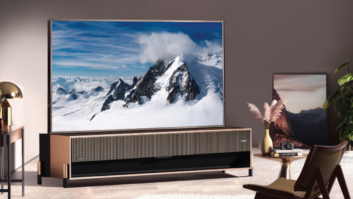Hisense USA will dramatically step up its U.S. brandbuilding efforts this year while strengthening a TV lineup that will include “disruptively priced” 4K Ultra HD TVs with Open HDR (high dynamic range), the company announced at CES.
The company is also expanding Open HDR to all 4K TVs and unveiling its first TV that, at launch, will meet all of the performance criteria of the Ultra HD Alliance. It’s the $2,799-suggested 65-inch curved. Its predecessor, the 65H10, will get a firmware update in late January to meet alliance criteria.
At CES, the company is also talking up planned third-generation ULED technology, which will appear in a 65-inch TV late in 2016. The TV will feature quantum-dot technology; a wider color gamut reaching 91 percent of Rec. 2020 levels, up from Digital Cinema Initiative P3 levels; wider dynamic range with 1,000-nit peak brightness, up from 900 nits; 300 zones of local dimming, up from 240; and Open HDR.
A total of 22 new TVs will be launched with resolutions from 720p to 4K in sizes from 20 to 65 inches. The TVs ship in February and April.
Still building: “We’re still building the Hisense brand in the U.S.,” said Mark Viken, Hisense USA’s new marketing VP. “The Hisense effort will be dramatically kicked up.” Plans call for a “dramatically stepped up” presence in digital advertising, more TV ads, more sports sponsorships, and more in-store merchandising, he said.
Hisense ran its first national TV ads in 2015 with NASCAR during the NASCAR Xfinity Series Hisense 250 at the Atlanta Motor Speedway and the NASCAR Xfinity Series Hisense 300 at Charlotte Motor Speedway. The brand partnered with Joe Gibbs Racing as the primary sponsor of the No. 20 Toyota Camry driven by Denny Hamlin. The company will continue its NASCAR sponsorship in 2016 and will add sponsorships in other sports, he said.
Disruption: The efforts will bring awareness to a brand whose 22 new models will include disruptively priced 50-and 55-inch 4K TVs in the new H8 series at respective suggested retails of $599 and $699. They combine Open HDR metadata, multizone local dimming, and proprietary HDR processing algorithm to deliver HDR performance and wide color gamut, though not to the levels required by the UHD Alliance’s minimum criteria. The TVs, nonetheless, “deliver a demonstrable improvement in color accuracy and realism,” the company said.
Also to tap into HDR’s potential demand, Hisense will include HDR decoding in all of its 4K TVs, even if the TVs don’t meet the HDR levels specified in the Ultra HD Alliance’s performance standards. “We can process the HDR metadata to make a better picture even with a 300-nit screen,” said product management director Chris Porter.
4K lineup: The 2016 4K lineup consists of four series starting with the H7. The H7 series features a $399 43-inch model, $549 50-inch model, $649 55-inch model, and a $1,299 65-inch model. The next step up is the disruptively priced H8 series. Next up is the H9 series with the 55-inch 55H9B, a follow up to the 55H9 launched last year with first-generation ULED technology. It will be priced at $999, down from $1,299.
The top model in the company’s 4K lineup will be the $2,799 H10 series 65H10B ULED 3D TV, a followup to the original $2,999 65H10.
FullHD, H720p TV: The company is launching three series of FullHD and 720p TVs, expanding its core lineup of smart 1080p TVs. The six-SKU H5 series of smart TVs ranges in size from 32 to 55 inches at prices from $199 to $499. It includes one 32-inch 720p TV. The series also includes the company’s first 32-inch FullHD TV, targeted to college students’ dorm rooms.
The H4 series consists of four FullHD and 720p smart TVs running the Roku TV OS in sizes from $199 to $429 in 32-to 50-inch screen sizes. The H3 series of feature TVs consists of four FullHD and 720p SKUs starting at $99 for a 20-inch model to $249 for a 40-inch model.
Roku TV: Also in 2016, the brand is expanding its selection of Roku TV models to four from two and giving the TVs a new industrial design. Last year’s Roku TV line consisted of two models at 40 and 48 inches.
Roku TVs incorporate the Roku OS smart-TV platform, which accesses all of Roku’s streaming audio and video services via Wi-Fi. The Roku TV platform is also promoted as simplifying content selection by putting all video sources — TV, Roku streaming services, and connected sources such as game consoles — on a homescreen UI.
Netflix Recommended TVs: Hisense is also expanding its selection of Netflix Recommended TVs from two in 2015 to a currently planned 16 in 2016, including 4K TVs. All but two smart TVs will feature Netflix certification. The certification program requires TVs to undergo an evaluation program to meet minimum standards determine if they offer better performance, easier app access, and new smart TV features.





